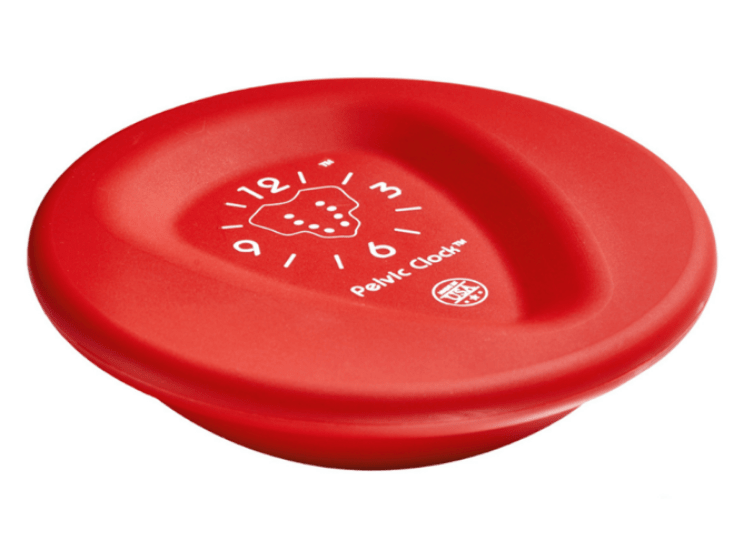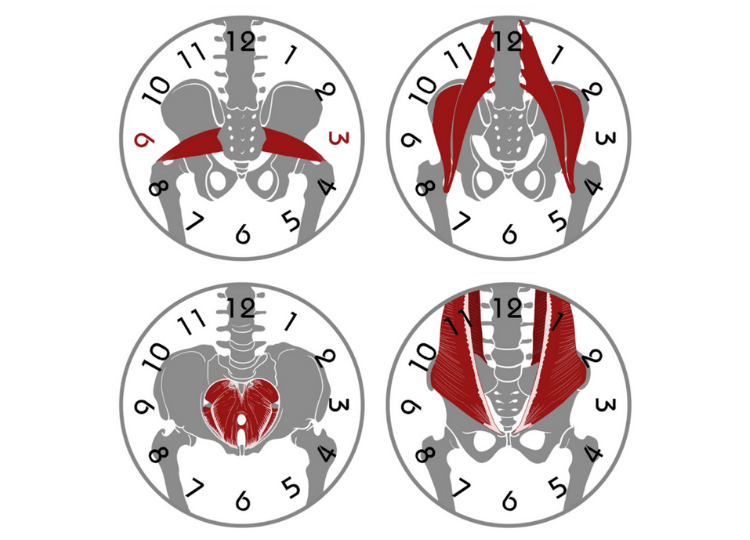We may earn a small commission on some links at no extra cost to you. Learn more.
The Pelvic Clock can be seen as an ode to what effective stretching and strengthening exercises can do for your body.
By improving your flexibility, strength and range of motion in your hips, core, back and pelvic floor, you can enjoy better full body movement.
A simple looking device with the power to have a significant impact for those who use it, the Pelvic Clock has won over athletes, doctors and healthcare professionals all over the world for its ability to help combat tight hips and a lower back with daily exercises. If your hip or back pain is a result of muscular tightness, the Pelvic Clock is certainly worth taking note of.
In this Pelvic Clock review, we delve into everything you need to know about the product, including how to use it, what we like about it, and potential alternatives.
(It’s obviously worth noting, if you do experience any lower back pain or discomfort, seek the advice of a medical professional first).
In a hurry? Check out their website below to learn more and for the latest price. 👇

PELVIC CLOCK
Hip and lower back pain relief, stretches tight hip flexor muscles, 30 day return policy.

Pelvic Clock Scorecard – Updated 2023
- Build Quality and Safety – 5/5
- Workout Diversity – 3.5/5
- Muscle Engagement – 5/5
- Shipping, Customer Support & Warranties – 4.5/5
- Price – 4/5
- Overall Rating – 4.6/5
Learn more about our review scorecards as part of our editorial review guidelines.
What is the Pelvic Clock?
Yana Blinova, a former Olympic gymnastics coach, and an expert in biomechanics, used her personal experience of lower back problems at elite level sport, to develop the Pelvic Clock.
It’s a tool to help improve hip and pelvic range of motion by using subtle hip movements to stretch and strengthen the muscles around the hips and pelvic floor.
The Pelvic Clock is a round device that has a clock face on it, with an indent that is shaped like your lower spine.
It is portable, lightweight, and easy to use.

Does the Pelvic Clock Work?
The reviews and case studies from using the Pelvic Clock suggest it definitely helps to stretch and strengthen the muscles around the hips and lower back. If your back pain is a result of poor hip flexibility or an unstable pelvic floor, then the Pelvic Clock would likely work to help reduce pain and improve movement.
It is worth noting that any sort of pain, whether lower back pain or pain in the hips, could be caused by all sorts of things, so the effectiveness of the Pelvic Clock really depends what is actually the root cause of your problems. Consequently, it is worth seeing a doctor or Physical Therapist to ensure the pelvic floor exercises would provide benefit, and that the pain is not a result of something else.
The tool is an enhancement of the pelvic clock exercise, which has become very common in Pilates and Physical Therapy classes.

How Do You Use the Pelvic Clock
The video below shows how you can use the device.
Pelvic Clock exercises can almost be seen as a progression of pelvic tilts. By keeping your body stable and focusing on very small movements around your hips, you can help to stretch and strengthen this part of your body.
Why is this important?
Good question… well it turns out all that sitting isn’t good for us, nor is doing the same movements over and over again. All this can create muscular imbalances, with some muscles barely getting used, whilst others are stiff from overexertion.
The Pelvic Clock helps to ensure you’re actively using and stretching the muscles around your core, hips and back.
The result?
A reduced risk of experiencing pain or injury associated with tight hips and lower back.
What We Like About the Pelvic Clock
Natural Progression From Pelvic Tilts
Pelvic tilts have become a staple in Pilates classes and help you understand how to engage small muscle groups effectively. They help to create a better connection between mind and muscle, which can help you better connect the dots between everyday movements and muscular imbalances.
From pelvic tilts, it naturally makes sense to include side to side movements as well, and before you know it, you’re practically doing pelvic clock exercises.
Easy to Use
The Pelvic Clock is an easy tool to use, simply being placed just above your glutes.
Lots of Resources and Support
The product comes with lots of informational guides and instructions to help you use it.
Their website also has plenty of free videos and resources too.
The image below shows how you can visualize how the clock markings help to target specific areas of the pelvis.

The inventor and owner of the company, Yana Blinova, also offers a one-on-one consultation via the website too, if you want to ask more questions or receive personal advice.
Power of Stretching
Stretching is so powerful when it comes to unlocking mobility and movement. Most of us simply don’t do enough of it.
A device like this helps to re-focus our attention on the benefits of targeted stretching. Stretching is less about trying to touch your toes for the sake of it, and more about combatting tight muscles that could limit natural movement and cause issues.
Effective stretching is never going to go out of fashion.
Our exercise guides on psoas marches and the Samson stretch are worth looking at if you want effective ways to stretch out tight hips too.

PELVIC CLOCK
Hip and lower back pain relief, stretches tight hip flexor muscles, 30 day return policy.
Things to Consider
The benefits of doing pelvic clock exercises come from correct form. It’s important you understand and follow the exercise recommendations carefully, otherwise you could do more damage than good.
All movements should be slow, controlled and without pain.
Stretching Apps
Who Is the Pelvic Clock Best For?
If your back pain is mechanical… i.e. caused by the mechanics of your body, the Pelvic Clock is certainly worth considering.
Whether this is from playing golf, sitting at a desk all day, or due to long-term muscular imbalances, the Pelvic Clock can benefit a wide range of users.
If you have seen a Physical Therapist and they have recommended stretching to help resolve your discomfort and pain, the pelvic clock exercises would likely help enhance that sort of program.
Bottom Line
With most of us living quite sedentary lifestyles, things like tight hips are an unfortunate consequence that we should deal with proactively. Without intervention, something as simple as tight hips could end up causing all sorts of MKS problems.
As a result, taking the time to do daily stretches, or activities like yoga, to help loosen and stretch out tight muscles, will likely have a big impact on your overall movement.
Although the Pelvic Clock is perhaps more expensive than you’d expect for something made of plastic… the ability to reduce pain and discomfort (and avoid costly Physical Therapy sessions), means the value is hard to argue against.

PELVIC CLOCK
Hip and lower back pain relief, stretches tight hip flexor muscles, 30 day return policy.
Related Articles:
Best Home Ice Bath Plunge Pools for Cold Water Therapy
